No matter how or why you’re upskilling your people, there’s a reliable way to make learning click: make it relevant. And one of the key ingredients to relevant learning is skill data.
Familiarizing yourself with the concepts behind skill data doesn’t have to be overwhelming. Understanding what it is, where it comes from, and how to get it can open up a world of new information to your organization.
Meeting and Exceeding Business Goals
Senior executives and CEOs want their teams to lead with advanced analytics, according to Deloitte. “The amount of data available to organizations every day continues to proliferate at a staggering volume… But not every organization is optimizing the opportunities available.”
In that same study, organizations that reported having the strongest cultural orientation to data-driven insights and decision-making were twice as likely to have reported exceeding business goals in the prior 12 months. Findings from the new Degreed report State of Skills 2021 show advanced data analytics rank among the top ten in-demand skills among HR professionals.
With skill data, you can make informed decisions and support dynamic talent initiatives that personalize learning, engage your people, provide new career opportunities, and create real business value.
Skill Data Pulls Together Four Key Insights
- User data reveals your people’s work experiences, sourced from places like their learning profiles, resumes, and third party networking sites. It’s also data from a human capital management (HCM), an applicant tracking system (ATS), or similar applications.
- Content data includes the courses, videos, books, podcasts, or any other materials your people are using to learn, often pulled from a learning experience platform (LXP) or upskilling solution. It also includes information about your content providers, including which are popular or rarely used.
- Activity data covers the daily behaviors of your workers; things like logins, browser searches, views, and completions.
- Opportunity data taps into the capabilities needed for projects, stretch assignments, gig work, and other internal career opportunities — the foundation for an internal talent marketplace.
Put another way, skill data is the holistic measurement of what your people can do, often aligned with the work that your organization needs to get done.
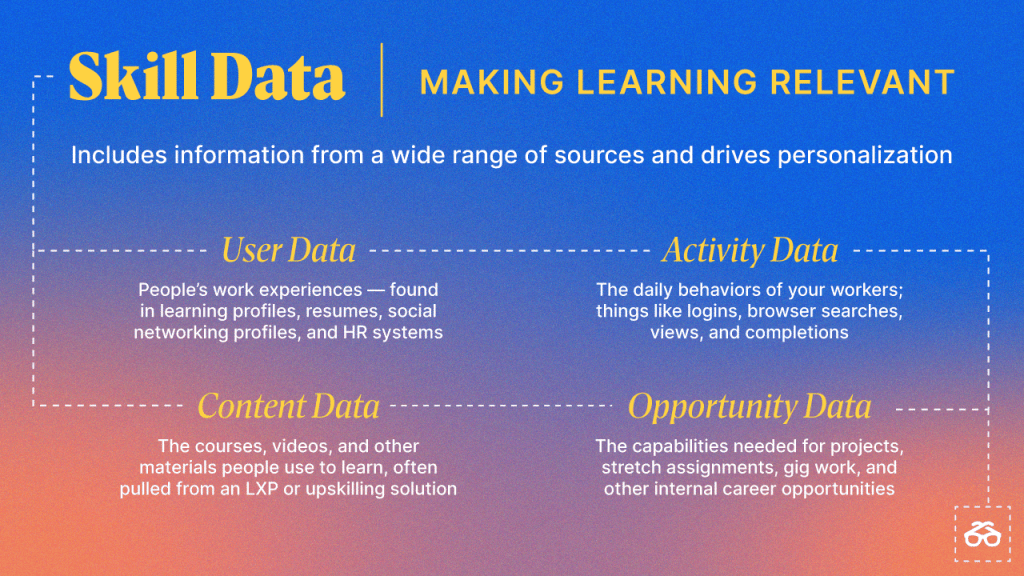
Designing for Relevancy
The creation and application of a skill data strategy can be broken down into four key stages.
- Collecting and generating data: Create a baseline of the skills your people have currently.
- Establishing a skill framework: Determine the critical skills for your organization and how they map to your people and learning resources.
- Exposing opportunities: Use skill data to create and share relevant learning and career opportunities with your people.
- Analyzing and refining: Clarify the supply and demand of skills in your organization and test the efficacy of your skill framework.
Creating and implementing a skill data strategy is cyclical. You can start where it makes the most sense for your team and organization. You don’t necessarily even need to work all four stages (especially if it’s slowing you down or inducing paralysis).
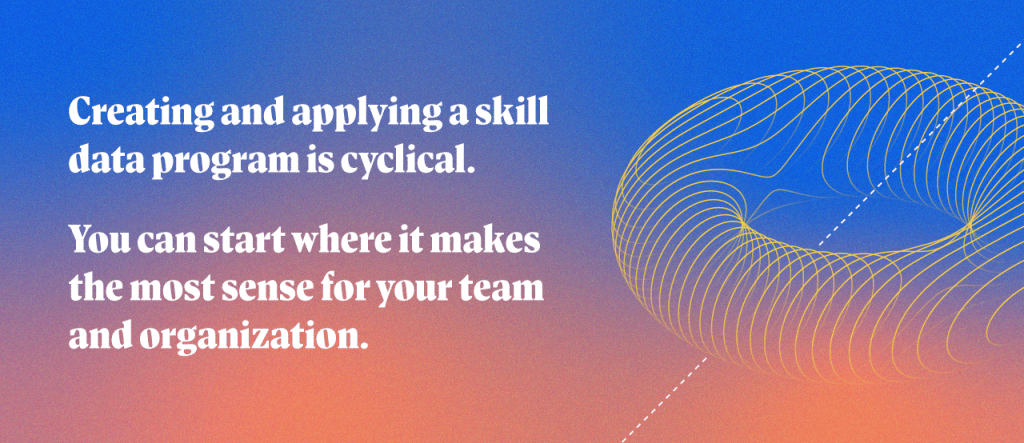
Collecting Skill Data
Gathering whatever skill data already exists allows you to create an information baseline. Even if your company doesn’t have any centralized skill information, it’s possible that individual teams or departments do.
If you’re pulling information from an HCM system, ATS, or other applications that aren’t integrated, it can be difficult and take a lot of time to get a full picture. You’ll probably find yourself managing data with spreadsheets. Another way that’s more comprehensive and less labor-intensive is using purpose-built technology that fixes the problem of fragmented and ever-evolving data sets. You can use a platform like Degreed that integrates with HR technologies and continuously collects new skill data from your workforce.
If you’re using Degreed, you can run some internal promotional campaigns and ask your people to rate their skills, creating an instant flood of data. New-hire onboarding is another great opportunity to capture this information.
Through all of this, it’s good to think about what’s driving your people to share their skill data. Do they want recommendations for learning? Do they want to prepare for their next career steps? Understanding these drivers can help shape your outreach and increase engagement.
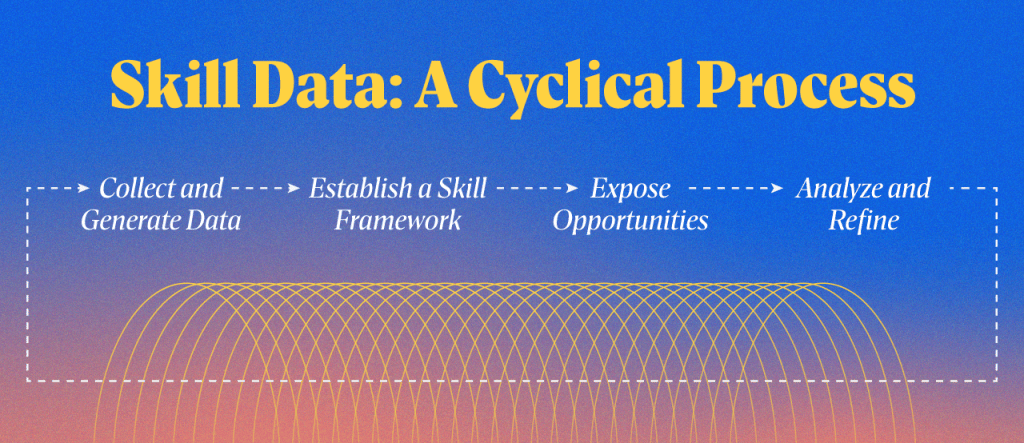
Establishing a Skill Framework
A skill framework, sometimes called a taxonomy, is a classification of skill names, descriptions, and how skills map to each other and to roles across your organization.
When companies start to establish a framework, two things are typically happening. Some focus on a subset of skills relevant across the organization that they care most about. Others use a centralized team to reach out to all business units, asking each to identify the skills for its people.
In addition, you can look at your organization’s role plans and select the skills that they reference. You can put these skills in your framework; they’ll help your people understand what’s relevant to their jobs and internal career opportunities.
Remember that your skill framework can evolve over time. It’s actually intended to do so, as new skills emerge and others go away.
Degreed provides a base framework of 2,400 common skills. If you’re a Degreed customer, consider starting with ours and growing yours from there. If you already have a framework, you can import it into Degreed. Either way, you can look at what skills people are adding to Degreed on their own and decide whether to include those in your framework. Our optional machine learning models can also help customize your framework over time.
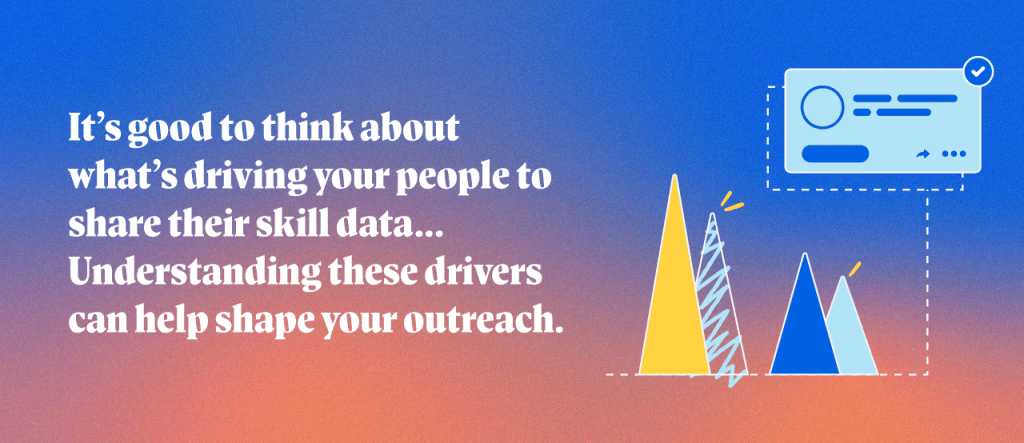
Exposing Opportunities
If you’re starting here, it’s probably because you’re eager to share internal career or learning opportunities like stretch assignments with your people. If so, it helps to first correlate those opportunities with the skills that they require. This is a higher priority than identifying which people have the requisite skills. Once people can see which skills they need to qualify for an opportunity, they can usually decide for themselves if their capabilities are a good match.
That said, proactively matching people to opportunities is important. Career mobility becomes more effective when it’s encouraged by managers. And that requires visibility into people’s capabilities, so you can offer guidance and connect them to relevant opportunities.
Exposing opportunities works best with a purpose-built solution that connects your people to opportunities based on their skills.
Analyzing and Refining Skill Data
If you’re starting here, you’ve probably got some existing skill data. Taking a look at it can give you a preliminary understanding of the state of skills across your organization.
By analyzing data on a team or line of business, you can ask its leaders if what you’re seeing is what they expected. You can find skill gaps and use that information to build new learning strategies. In other words, you can figure out if your skill framework is effective and how it might need to change.
You also can identify areas where you want to collect even more skill data. When you make a plan to lean in and get more data, you’re setting yourself up to answer tomorrow the questions you can’t answer today.
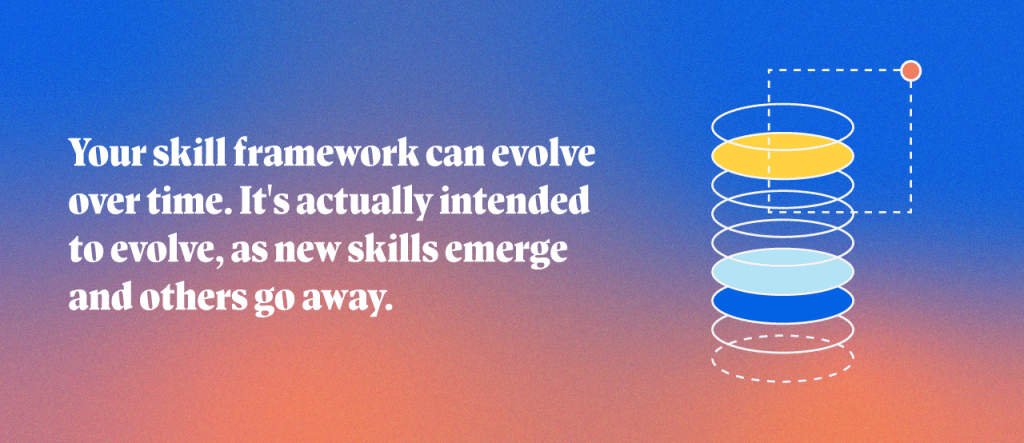
Go Fast or Go Slow, But Don’t Go It Alone
Getting started with skill data is all about just that — starting.
Partnering and brainstorming with another person or team can help you navigate each stage of the process.
And we’re here to help too. Degreed is built largely on skill data, a unique ability to measure and track skill development over time by weaving the whole process into the one thing people value most: their career growth. And we use that real-time data on people’s skills to automatically match people to relevant opportunities. We do this in two key ways: matching for employees’ existing skill expertise and for areas in which they want to grow new skills. In addition, Degreed engages workers day in and out, constantly generating information that’s used to influence opportunity matching.
Contact Degreed to discuss skill data with us in more detail. And to learn more, download our new guide, The Ultimate Skill Data Handbook, today!

